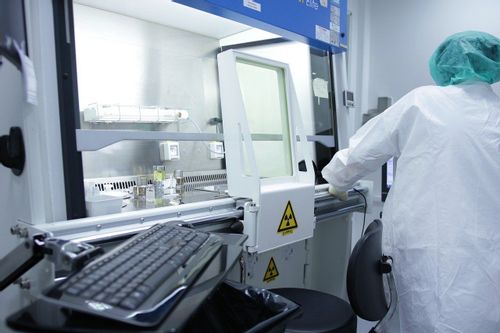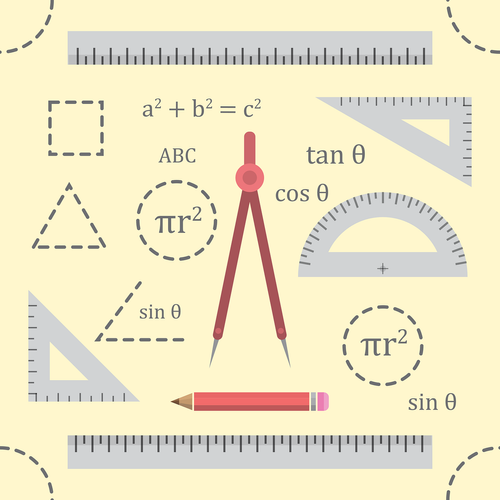Standards Packages
iTeh together with SIST has developed and compiled a comprehensive collection of standard packages to support your standard requirements. Our packages cover an array of content that includes quality management, risk management, road vehicles, machine safety, and much more. With over 200 packages to choose from, you are sure to find a collection to suit your standard needs.
Latest Standards
This document specifies the test suite structure (TSS) and test purposes (TPs) for evaluation of on-board equipment (OBE) and roadside equipment (RSE) to EN 15509.
Normative Annex A presents the test purposes for the OBE.
Normative Annex B presents the test purposes for the RSE.
Normative Annex C provides the protocol conformance test report (PCTR) proforma for OBE.
Normative Annex D provides the PCTR proforma for RSE.
- Standard121 pagesEnglish languagesale 10% offe-Library read for1 day
This document specifies requirements for design, performance, test methods and markings for industrial protective helmets. The requirements apply to helmets for general use in industry.
Additional performance requirements for special applications are included to apply only when specifically claimed by the helmet manufacturer.
Industrial protective helmets are intended to reduce the risk of head injuries caused by impacts and therefore can reduce consequential effects.
- Standard55 pagesEnglish languagesale 10% offe-Library read for1 day
This TS provides requirements and ISO/IEC 17065 interpretations for Conformity Assessment Bodies (CABs) assessing Cloud Services
This TS is intended to be used by the National Accreditation Bodies (NABs), as well as CABs.
- Technical specification45 pagesEnglish languagesale 10% offe-Library read for1 day
This document defines requirements and provides guidance on:
• capturing of facial images to be used for verification or identification purposes in applications based on reference images in identity or similar documents and traveller or visa databases;
• capturing of fingerprint images to be used for verification or identification purposes in applications based on reference images in identity or similar documents and traveller or visa databases;
• data quality maintenance for biometric data captured by/for verification or identification applications;
• data authenticity maintenance for biometric data captured by/for verification or identification ap-plications.
This document addresses the following aspects which are specific for biometric data capturing:
• biometric data quality and interoperability assurance;
• data authenticity assurance;
• morphing and other presentation attacks and biometric data injection attacks;
• accessibility and usability;
• recognition algorithms and their evaluation;
• privacy and data protection;
• optimal process design.
The following aspects are out of scope:
• other aspects of IT security;
• data capturing for ID document enrolment purposes, e.g. passport or ID card enrolment.
- Technical specification30 pagesEnglish languagesale 10% offe-Library read for1 day
This document specifies performance requirements for electrofusion control unit (ECU) for use with polyethylene (PE) electrofusion fittings conforming to ISO 4437-3,[ REF Reference_ref_6 \r \h 1 08D0C9EA79F9BACE118C8200AA004BA90B0200000008000000100000005200650066006500720065006E00630065005F007200650066005F0036000000 ]ISO 4427-3[ REF Reference_ref_7 \r \h 2 08D0C9EA79F9BACE118C8200AA004BA90B0200000008000000100000005200650066006500720065006E00630065005F007200650066005F0037000000 ] and ISO 15494.[ REF Reference_ref_8 \r \h 3 08D0C9EA79F9BACE118C8200AA004BA90B0200000008000000100000005200650066006500720065006E00630065005F007200650066005F0038000000 ] NOTE 1 Electrofusion fittings conforming to other documents, e.g. EN 1555-3[ REF Reference_ref_9 \r \h 4 08D0C9EA79F9BACE118C8200AA004BA90B0200000008000000100000005200650066006500720065006E00630065005F007200650066005F0039000000 ] and EN 12201-3,[ REF Reference_ref_10 \r \h 5 08D0C9EA79F9BACE118C8200AA004BA90B0200000008000000110000005200650066006500720065006E00630065005F007200650066005F00310030000000 ] can also be within the scope of this document. The system designed to manage the transfer of data collected during the fusion process is out of the scope of this document. NOTE 2 Data format and retrieval system are specified in ISO 12176-5. NOTE 3 Parameters for the electrofusion cycle are defined in ISO 13950 and ISO 12176-5. Data for traceability purposes are given in ISO 12176-3, ISO 12176-4 and ISO 12176-5. Electrical safety is out of the scope of this document. NOTE 4 The manufacturer of ECU is informed that different safety regulations are in force in different countries or regional area, e.g.: U.S.A., Europe, etc. ECU designed for only one brand of fittings is out of the scope of this document. Excluding any of the requirements specified in this document is not acceptable when an organization claims conformity to this document.
- Standard20 pagesEnglish languagesale 15% off
- Corrigendum3 pagesEnglish languagesale 10% offe-Library read for1 day
- Amendment5 pagesEnglish languagesale 10% offe-Library read for1 day
This document gives guidance on the qualification of the performance of a computed tomography (CT) system with respect to various testing tasks. This document is applicable only to industrial imaging (i.e. non-medical applications) and provides a consistent set of definitions of CT performance parameters, including the relationship between these performance parameters and CT system specifications. This document is applicable to industrial computed tomography. This document does not apply to other techniques of tomography such as translational tomography and tomosynthesis.
- Standard10 pagesEnglish languagesale 15% off
- Standard11 pagesFrench languagesale 15% off
This document provides a measurement method to assess the reliability of washing machines for household use. This document defines the functional analysis, limiting events/states, environmental conditions and test conditions of washing machines. It also elaborates on the level of confidence on the measurement results. NOTE 1 The method is based on EN 45552 (General method for the assessment of the durability of energy-related products) and takes into account EN 45554 (General methods for the assessment of the ability to repair, reuse and upgrade energy-related products). This document provides information about the interrelations of reliability, repairability and upgradeability with consideration towards a durability assessment for washing machines for household use. This document provides input/results about the investigation on the assessment of repairability and upgradeability for washing machines for household use. This document is not intended to be used to assess the reliability of: - washing machines, intended for commercial or industrial use; - washer-dryers. NOTE 2 A testing method for washing machines unable to provide heated washing programmes have a low market relevance and will be considered in a future edition of this standard. This document does not address the ability of washing machines to be reused. Product functions related to the safety of washing machines are out of the scope of this document. NOTE 3 EN 60335-2-7 addresses safety requirements for household appliances. It includes aging tests that are relevant to safety. This document is intended to be used for the validation of a reliability declaration.
- Draft25 pagesEnglish languagesale 10% offe-Library read for1 day
This document specifies the characteristics of prevailing torque (all metal) hexagon high nuts, in steel and stainless steel, with metric fine pitch thread 8 mm to 39 mm, and with product grades A and B. NOTE These nuts are designed with an overall height hmin = mmin (as specified in ISO 898-2 and ISO 8674 for style 2) plus the prevailing torque feature. hmax has been established in function of hmin; therefore, the tolerance (hmax – hmin) does not follow the ISO code system for tolerances (IT system). The wrenching height mw,min corresponds to the values specified for style 1. If in certain cases other specifications are requested, property classes and stainless steel grades can be selected from ISO 898-2 or ISO 3506-2.
- Standard6 pagesEnglish languagesale 15% off
- Standard6 pagesFrench languagesale 15% off
This document specifies a method for measuring the pH value of dispersions and coating materials using pH sensors with ion-sensitive field-effect transistor (ISFET) technology.
- Standard11 pagesEnglish languagesale 15% off
- Standard12 pagesFrench languagesale 15% off
This document specifies general conditions, defines terms, gives practical guidelines, and establishes the basic principles of the component tests used in the other parts of the ISO 11452 series for determining the immunity of electronic components of passenger cars and commercial vehicles to electrical disturbances from narrowband radiated electromagnetic energy, regardless of the vehicle propulsion system (e.g. spark-ignition engine, diesel engine, electric motor). The electromagnetic disturbances considered are limited to continuous narrowband electromagnetic fields. A wide frequency range (d.c. and 15 Hz to 18 GHz) is allowed for the immunity testing of the components in the ISO 11452 series.
- Standard47 pagesEnglish languagesale 15% off
This document specifies the manual methods used for obtaining samples of liquid or semi-liquid hydrocarbons, tank residues and deposits from fixed tanks, railcars, road vehicles, ships and barges, drums and cans, or from liquids being pumped in pipelines. It applies to the sampling of liquid products, including crude oils, intermediate products, synthetic hydrocarbons and bio fuels, which are stored at or near atmospheric pressure, or transferred by pipelines as liquids at elevated pressures and temperatures. The sampling procedures specified are not intended for the sampling of special petroleum products which are the subject of other International Standards, such as electrical insulating oils (covered in IEC 60475), liquefied petroleum gases (covered in ISO 4257), liquefied natural gases (covered in ISO 8943) and gaseous natural gases (covered in ISO 10715). This document refers to methods of sampling and sampling equipment in use at the time of writing. It does not exclude the use of new equipment, provided that such equipment enables samples to be obtained according to the requirements and procedures of this document.
- Standard66 pagesEnglish languagesale 15% off
- Standard73 pagesFrench languagesale 15% off
This document specifies the characteristics of prevailing torque hexagon regular nuts (with non‑metallic insert), in steel and stainless steel, with metric fine pitch thread 8 mm to 39 mm, and with product grades A and B. NOTE These nuts are designed with an overall height equal to mmin (as specified in ISO 898-2 and ISO 8673 for style 1) plus the prevailing torque feature. The height of the prevailing torque feature (hmax – mmin) for the non-metallic insert is identical for regular, high and thin nuts for a given diameter. If in certain cases other specifications are requested, property classes and stainless steel grades can be selected from ISO 898-2 or ISO 3506-2.
- Standard6 pagesEnglish languagesale 15% off
- Standard6 pagesFrench languagesale 15% off
This document covers the type testing of valve stem seals using a test fixture that is designed and fully defined to be representative of the performance of a valve using similar geometry. This document is applicable to stem seals for multi-turn, linear and quarter turn valves. It is intended to provide comparative type test results confirming the performance of seal manufacturers’ stem seal designs. This document is not intended to replace type testing of complete valve assemblies or valve production testing. Compliance with this document is not intended to be a mandatory qualification test to be completed for a stem seal design prior to testing a valve to the requirements of ISO 15848-1. Compressible seals with and without live loading, elastomers and pressure energized seals are in the scope of this document. Corrosion tests are not included in this document.
- Standard24 pagesEnglish languagesale 15% off
IEC 62232:2025 provides methods for the determination of RF field strength, power density and specific absorption rate (SAR) in the vicinity of base stations (BS) for the purpose of evaluating human exposure. This document: a) considers intentionally radiating BS which transmit on one or more antennas using one or more frequencies in the range 110 MHz to 300 GHz; b) considers the impact of ambient sources on RF exposure at least in the 100 kHz to 300 GHz frequency range; c) specifies the methods to be used for RF exposure evaluation for compliance assessment applications, namely: 1) product compliance – determination of compliance boundary information for a BS product before it is placed on the market; 2) product installation compliance – determination of the total RF exposure levels in accessible areas from a BS product and other relevant sources before the product is put into operation; 3) in-situ RF exposure assessment – measurement of in-situ RF exposure levels in the vicinity of a BS installation after the product has been taken into operation; d) specifies how to perform RF exposure assessment based on the actual maximum approach; e) describes several RF field strength, power density, and SAR measurement and computation methodologies with guidance on their applicability to address both the in-situ evaluation of installed BS and laboratory-based evaluations; f) describes how surveyors establish their specific evaluation procedures appropriate for their evaluation purpose; g) provides guidance on how to report, interpret and compare results from different evaluation methodologies and, where the evaluation purpose requires it, determine a justified decision against a limit value; h) provides methods for the RF exposure assessment of BS using time-varying beam-steering technologies such as new radio (NR) BS using massive multiple input multiple output (MIMO). NOTE 1 Practical implementation case studies are provided as examples in the companion Technical Report IEC TR 62669 [5]. NOTE 2 Although the current BS product types have been specified to operate up to 200 GHz (see, for example, [6] and [7]), the upper frequency of 300 GHz is consistent with applicable exposure limits. NOTE 3 The lower frequency considered for ambient sources, 100 kHz, is derived from ICNIRP-1998 [2] and ICNIRP-2020 [1]. However, some applicable exposure guidelines require ambient fields to be evaluated as low as 3 kHz, e.g. Safety Code 6 [4] and IEEE Std C95.1-2019 [3]. NOTE 4 Specification of appropriate RF exposure mitigation measures such as signage, access control, and training are beyond the scope of this document. It is possible to refer to the applicable regulations or recommended practices on these topics. NOTE 5 While this document is based on the current international consensus about the best engineering practice for assessing the compliance of RF exposure with the applicable exposure limits, it is possible that national regulatory agencies specify different requirements. The entity conducting an RF exposure assessment needs to be aware of the applicable regulations. This fourth edition cancels and replaces the third edition published in 2022. It includes corrections of obvious errors and text improvements on the third edition in order to bring more clarity in the description of the assessment methods and avoid misinterpretations. This edition has the same technical content as the third edition.
- Draft331 pagesEnglish languagesale 10% offe-Library read for1 day
IEC 62840-1:2025 gives the general overview for battery swap systems, for the purposes of swapping batteries of electric road vehicles when the vehicle powertrain is turned off and when the battery swap system is connected to the supply network at standard supply voltages according to IEC 60038 with a rated voltage up to 1 000 V AC and up to 1 500 V DC. This document is applicable for battery swap systems for EV equipped with one or more – swappable battery systems (SBS), or – handheld-swappable battery systems (HBS). This document provides guidance for interoperability. This document applies to • battery swap systems supplied from on-site storage systems (for example buffer batteries etc), • manual, mechanically assisted and automatic systems, • battery swap systems intended to supply SBS/HBS having communication allowing to identify the battery system characteristics, and • battery swap systems intended to be installed at an altitude of up to 2 000 m. This document is not applicable to • aspects related to maintenance and service of the battery swap station (BSS), • trolley buses, rail vehicles and vehicles designed primarily for use off-road, • maintenance and service of EVs, • safety requirements for mechanical equipment covered by the ISO 10218 series, • locking compartments systems providing AC socket-outlets for the use of manufacturer specific voltage converter units and manufacturer specific battery systems, • electrical devices and components, which are covered by their specific product standards, • any fix-installed equipment of EV, which is covered by ISO, and • EMC requirements for on-board equipment of EV while connected to the BSS. This first edition cancels and replaces the first edition of IEC TS 61280-1 published in 2016. This edition includes the following significant technical changes with respect to IEC TS 61280-1:2016: a) expanded scope to include handheld-swappable battery systems (HBS) and guidance on interoperability; b) added definitions for "handheld-swappable battery system" (HBS) and expanded related terms such as "SBS/HBS coupler," "SBS/HBS charger," etc; c) added classifications based on supply network characteristics, connection method, access and type of BSS; d) added support for HBS, detailing the different compositions and workflows for type A (SBS) and type B (HBS) battery swap stations; e) added requirements for functional interoperability, interface interoperability, data interoperability, operational interoperability, compatibility with legacy systems, and scalability; f) added requirements for communication, protection against electric shock, specific requirements for accessories), cable assembly requirements, BSS constructional requirements, overload and short circuit protection, EMC, emergency switching or disconnect, marking and instructions; g) expanded annex content, adding solutions for manual swapping stations for motorcycles with HBS and updating use cases.
- Draft33 pagesEnglish languagesale 10% offe-Library read for1 day
This document describes the introduction of radiated immunity testing for the components and vehicles equipped with V2X communications. The link communication connection and V2X scenario simulation are considered to make the V2X functions and their communications operate normally during the immunity testing. Examples of monitoring are also discussed to show the electromagnetic interference reactions of the device with V2X under test. In addition, test hints are described to provide information on radiated immunity for V2X. Technical specifications are not within the scope of this document.
- Technical report47 pagesEnglish languagesale 15% off
- Standard2 pagesEnglish languagesale 15% off
- Draft5 pagesEnglish languagesale 10% offe-Library read for1 day
Benefits

Full Standards Solution
Our catalog includes not only latest standards but also full meta information about related standardization project lifecycle.

Cost Effective
Our PRICE MATCH GUARANTEE policy with multi-level volume discounts gives our clients the best option in the market. In addition, you can get access to the standards for 3, 10, or 30 days.

Stay Notified
Get alerted to the latest revisions and new standards in the Weekly Newsletter. Standards are constantly changing. Don’t miss a revision that can impact your business.
About Us
iTeh Inc is a software development and IT consulting team of professionals who provide consulting, development and implementation of solutions for all types of businesses.
In cooperation, with the Slovenian Institute of Standardization (SIST), we create a unique solution that covers all aspects of the lifecycle of Standardization organizations. iTeh Standards is a part of the solution that helps SIST to provide and sell their products to Customers.
iTeh Standards Store is an evolving project, our goal is to build long-term relationships with our customers. We believe in delivering quality services to solve our customers' challenges and define success by exceeding our customers' expectations. We are always ready to listen and our experience allows us to provide our customers with helpful effective suggestions. You can contact us by email.
We are committed to providing the best possible experience for our customers.
Compliance with international standards is increasingly becoming one of the key competitive advantages in the global market. Our company creates all conditions for the most comfortable implementation of new documents and norms in the processes carried out by your organization. Some of the key advantages of working with us are:
- Cost-effective - multi-level discounts and permanent updates of the functions give our clients the best option on the market.
- e-Library - access to standards for a period of time of your choice. It is a cost-effective solution for keeping updated with the newest standards.
- Company-wide documents - create a company account and connect all employees with access to purchased standards, e-Library documents, and packages.
- All in one spot - all purchased standards are kept in one place with controlled access by the account administrator.
- Client-centric - providing quality consulting is the prerogative and incentive to create new products that accompany your success and scale.
- 24 / 7 client support
We are dedicated to building mutually beneficial and long-term relationships with our clients. That is why our team focuses on creating services to help our customers develop and achieve new productive results.
























